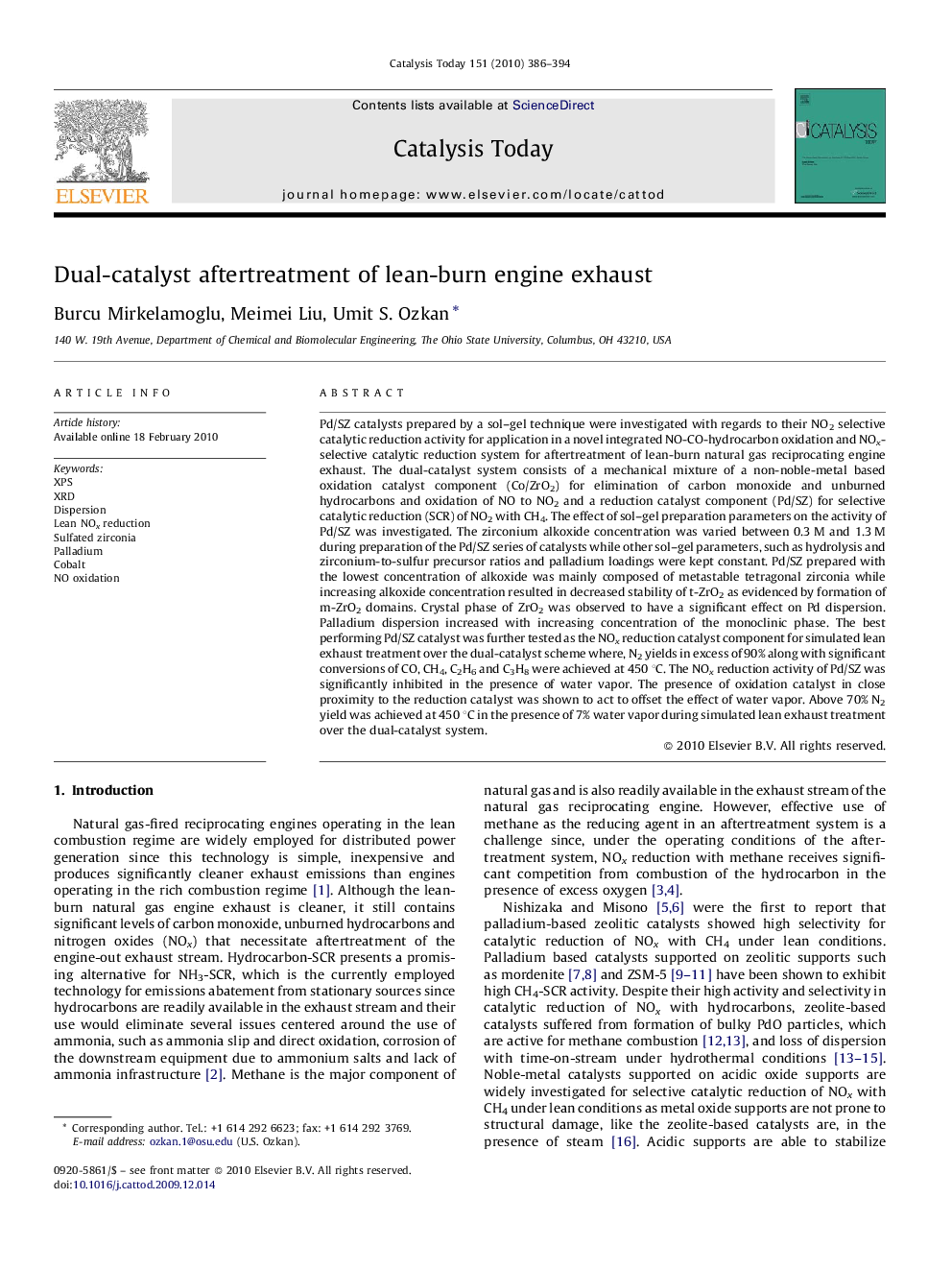| کد مقاله | کد نشریه | سال انتشار | مقاله انگلیسی | نسخه تمام متن |
|---|---|---|---|---|
| 56550 | 47086 | 2010 | 9 صفحه PDF | دانلود رایگان |

Pd/SZ catalysts prepared by a sol–gel technique were investigated with regards to their NO2 selective catalytic reduction activity for application in a novel integrated NO-CO-hydrocarbon oxidation and NOx-selective catalytic reduction system for aftertreatment of lean-burn natural gas reciprocating engine exhaust. The dual-catalyst system consists of a mechanical mixture of a non-noble-metal based oxidation catalyst component (Co/ZrO2) for elimination of carbon monoxide and unburned hydrocarbons and oxidation of NO to NO2 and a reduction catalyst component (Pd/SZ) for selective catalytic reduction (SCR) of NO2 with CH4. The effect of sol–gel preparation parameters on the activity of Pd/SZ was investigated. The zirconium alkoxide concentration was varied between 0.3 M and 1.3 M during preparation of the Pd/SZ series of catalysts while other sol–gel parameters, such as hydrolysis and zirconium-to-sulfur precursor ratios and palladium loadings were kept constant. Pd/SZ prepared with the lowest concentration of alkoxide was mainly composed of metastable tetragonal zirconia while increasing alkoxide concentration resulted in decreased stability of t-ZrO2 as evidenced by formation of m-ZrO2 domains. Crystal phase of ZrO2 was observed to have a significant effect on Pd dispersion. Palladium dispersion increased with increasing concentration of the monoclinic phase. The best performing Pd/SZ catalyst was further tested as the NOx reduction catalyst component for simulated lean exhaust treatment over the dual-catalyst scheme where, N2 yields in excess of 90% along with significant conversions of CO, CH4, C2H6 and C3H8 were achieved at 450 °C. The NOx reduction activity of Pd/SZ was significantly inhibited in the presence of water vapor. The presence of oxidation catalyst in close proximity to the reduction catalyst was shown to act to offset the effect of water vapor. Above 70% N2 yield was achieved at 450 °C in the presence of 7% water vapor during simulated lean exhaust treatment over the dual-catalyst system.
Journal: Catalysis Today - Volume 151, Issues 3–4, 19 June 2010, Pages 386–394